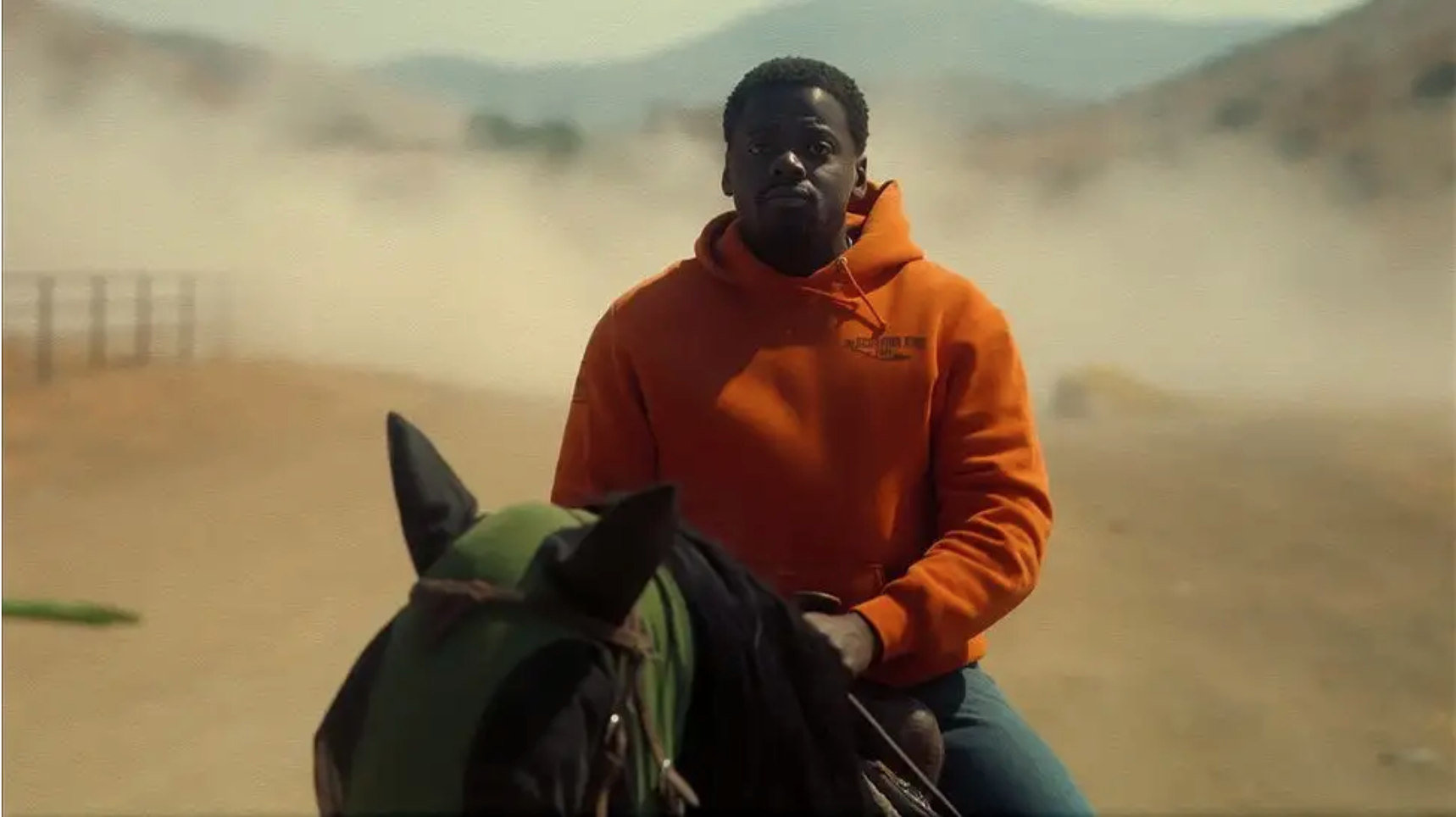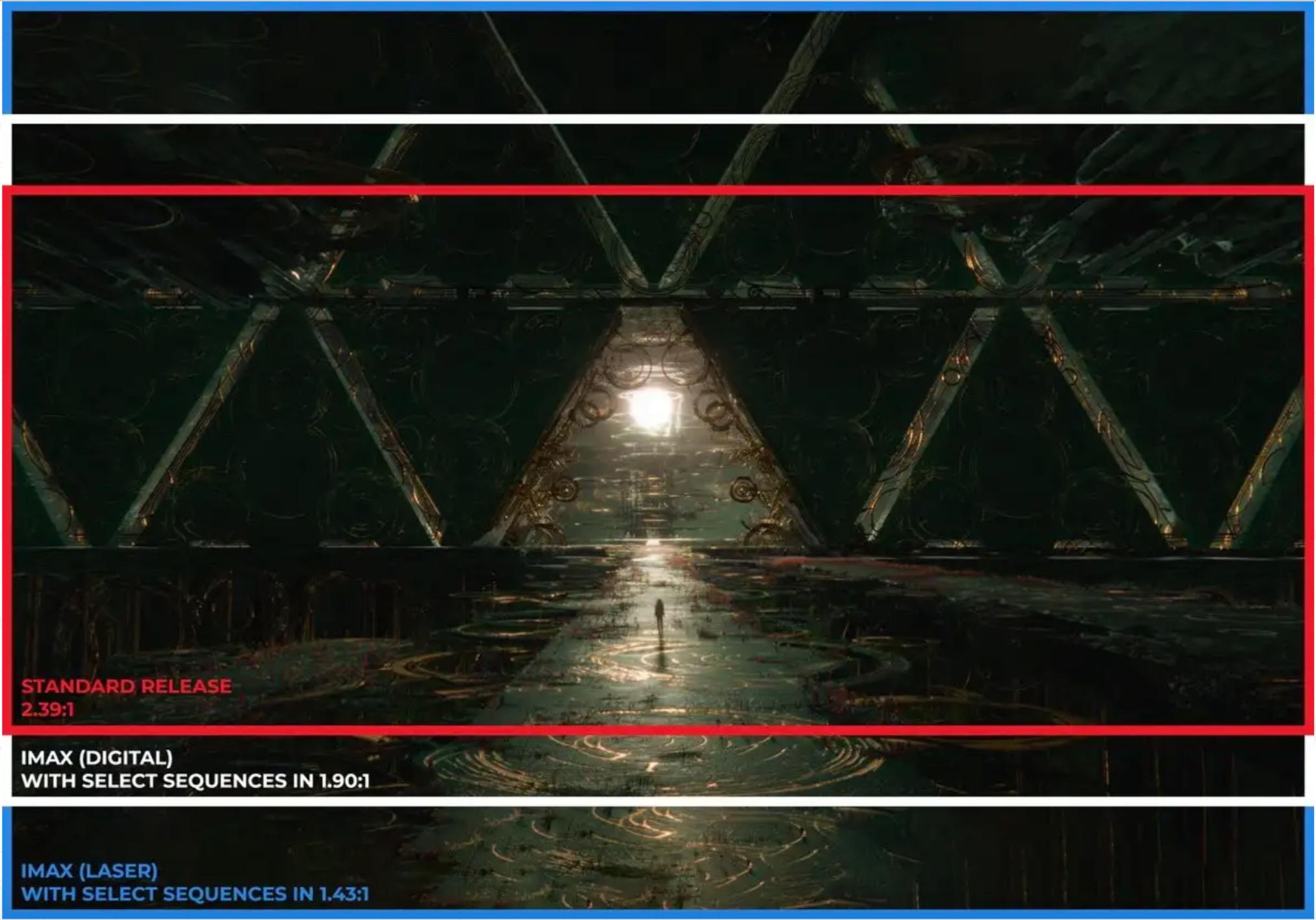‘Nope’ Review + Analysis: Jordan Peele’s cinematic melange of spectacle and story
Before big-time court-room dramas and indie thrillers, sweeping romances and covert international missions of espionage, film was less about stories and more about spectacle. In the late 1800s, any semblance of character or theme was secondary to the experience of watching a picture in motion. This new technology stunned audiences with its potential to capture “reality.” ‘Nope’ is rooted in this fundamental understanding of spectacle.
The film centers around O.J. (Daniel Kaluuya) and Emerald (Keke Palmer), two siblings who run a Hollywood horse ranch. They also happen to be the descendants of the black jockey in one of the first ever motion pictures: Eadweard Muybridge’s 1887 film, ‘The Horse in Motion.’
This series of pictures was created in the name of science rather than art. People had the question of whether there was a moment in a horse’s gallop where it had all four feet off of the ground. ‘The Horse in Motion’ was an experiment to learn more about the inner workings of an animal and share the results with the world. The same thing can be said for O.J. and Emerald’s relationship to the alien in the film. As they come across the alien in its flying saucer form, their first instinct isn’t to kill it, or hurt it, or even to understand it — it’s to document it.
I also want to point out how film as a technology is a brilliant backdrop for this story. It’s no coincidence that Peele referenced to “shooting” film and “capturing” an image — two examples of predatory language. Recording an image of something is inherently exerting some form of dominion over the subject. For a story that is rooted in the mysterious and powerful, the idea of “shooting” to “capture” is an apt medium.
IMAX as a Symbol
Bear with me while I nerd out a bit. Leading up to the release of ‘Nope,’ Peele was very vocal about the film’s production. It was shot by frequent Nolan collaborator Hoyte van Hoytema on 65mm IMAX cameras and projected on 1.43.1 aspect ratio (which is exclusively made for IMAX). IMAX was originally used in nature and space documentaries but has now, with the help of director Christopher Nolan (i.e. Dunkirk, Tenet), entered Hollywood cinema in a big way. ‘Nope’ is the first horror movie to use this film format. IMAX creates the possibility for a giant (virtually floor-to ceiling) and high-resolution theater projection. For this reason, moviegoers (including myself) shell out the extra bucks to see the film in an IMAX theater. Not because the story is any different, but because of the spectacle.
Every aspect of the film is drenched in Peele’s clear adoration for film as spectacle and the grandeur of IMAX. So much so, that we see the cinematographer, Antlers Holst (Michael Wincott), using an actual IMAX camera with an add-on crank as he tries to capture an image of the alien.
Animals and Race (and Gordy)
While the film boasts some impressive, immersive IMAX, and stunning infrared ‘day-for-night’ shots, its success does not solely ride on technological feats. Perhaps one of the most brilliant IMAX scenes, is one of great thematic and narrative importance: Gordy’s attack in the television studio. The film opens in the aftermath of his attack. Gordy was a chimpanzee that starred in the fictional sitcom, ‘Gordy’s Home.’ It centered around a white family (with an adopted Asian son) and their pet chimp, Gordy. During live filming of an episode celebrating Gordy’s birthday, he goes on a rampage and ends up killing and brutally attacking the cast. Notably, the only one to leave unscathed is Ricky “Jupe” Park (Steven Yeun), the Asian child actor. This scene gives rise to a central theme of the relationship between animals and people, specifically people of color. Why was Jupe spared by Gordy? Perhaps because Gordy recognized a similarity between their identities. A minority child actor and an animal being exploited by a predominantly white cast, crew, audience, and culture for the menial purpose of entertainment and profit. In Gordy’s final moments, he extends his fist towards Jupe as if to say, “I saved us. I got you.”
That is not to say that Jupe had the power to take this solidarity for granted. In Jupe’s final scene, as the alien approached Jupiter’s Claim, Jupe remained calm and confident about his safety. He mentions that if the aliens wanted to hurt us, then they would have already. This is braggadocios confidence clearly stems from his experience with Gordy. To Jupe, Gordy spared him because he was special, not because they held a similar identity. Faced with the alien appearance, Jupe chose to do exactly what was done to himself and Gordy: exploit the alien for entertainment and profit.
It’s interesting to juxtapose Jupe and Gordy’s relationship to O.J. and the horses’. Jupe’s priority was that of financial gain. O.J.’s was that of connection and understanding. Even when O.J. had to sell some of the horses away to Jupiter’s Claim, he still vowed to buy them back when he could. Perhaps their difference in relationship is what determined their opposing fates.
The Rise of the Inflatables
It took me a long time to find meaning in the inflatable objects that were seen in the film. I couldn’t just accept that Jordan Peele liked these synthetic floating bags — his stories demand attention and analysis. When Peele is at his best, nothing in his films is included by accident.
There were three main examples of inflatables in ‘Nope’: the wacky wavy car wash inflatables outside of Hayward Ranch, the balloons from the set of “Gordy’s Home,” and the giant inflatable Kid Sheriff at Jupiter’s Claim. But what was their significance? What tied them all together? Without getting too heady, I believe they all exhibit humanity as a character. Following Jordan Peele’s opinion, humans are species of great but flawed power.
In a setting full of animals and sweeping rural landscapes, the inflatables stick out like a sore thumb. The presence of human commercialism and modernization looms large over the California countryside. In these examples, the three different inflatables embody three different characters of humanity.
The waving inflatable tubes outside Hayward Ranch flank each side of the road. They are bright-colored and springy, calling attention to them every time the camera pans over the ranch. However, later in the film when they become battery-powered, the alien wipes them out with its presence alone. The inflatables fall to the ground, dormant and defeated. When paired with a technologically advanced product such as batteries, these inflatables hold no power against this mysterious species. However, the inflatables (a.k.a. humans) on their own still remain a terrible force to be reckoned with.
In Gordy’s attack, I’ve seen many people reference the balloons popping as the reason for Gordy going on his rampage. While I agree, this does not explain everything. The balloons popping shows humans as instigators. We are a species that, through conquering the planet and its inhabitants, provoke those that are lesser than or misunderstood to snap. This framework begs the question: If the balloons never popped, would Gordy still go wild? Or, perhaps more importantly, were the popping balloons (or something like them) inevitable? I think so. As long as those in power remain to perpetuate a culture of exploitation, there will always be something causes those who are exploited to strike back.
In ‘Nope’’s final scene, Emerald lets off a giant inflatable of Jupe in ‘Kid Sheriff.’ The alien foolishly attempts to consume it, causing the inflatable to pop and blow the alien up with it. An inflatable sheriff as the savior of humanity was an intentional choice and a fun Easter egg. However, more importantly, the scene shows humanity as victorious once again. While humans can instigate their own adversarial attacks, they can also defeat them through exploitative power.
The lesson of the story is meta-textual. By the end of the film, none of the characters learned some universal truth or overarching moral. Instead, the meaning of the film is strictly directed towards us: Do not be consumed by the seduction of spectacle. Beware of a culture that oppresses, capitalizes, and exploits nature and its creatures.
While ‘Nope’ gives us a happy ending, humanity’s triumph feels hollow. The little that we know about the alien leaves us to assume that there could be worst to come. The story set out to see that if animals don’t destroy us, perhaps aliens will. Now we are left to project that if aliens don’t destroy us, perhaps something even greater will.
While Jordan Peele’s films are so often categorized as horror, it is not a hard task to convince someone of the many other themes and genres that he taps into. Take this film. ‘Nope’ is a horror western flying saucer film with elements of racial and social commentary, grand action sequences, and a generous dose of comedy.
Ultimately, whether or not you like ‘Nope’ is directly related to the amount of trust that you place in Jordan Peele. He plays with high-level concepts that require as much faith in him as they do repeat viewings. With many recent releases, I leave the theater without a second thought about the film’s overarching meaning or hidden clues in scenes. However, Jordan Peele’s films (particularly ‘Nope’) beckon you back into the theater. They pressure you to find meaning in the obscure and reward you with a feeling of great satisfaction as you do it.
(Originally published on August 11, 2022.)




